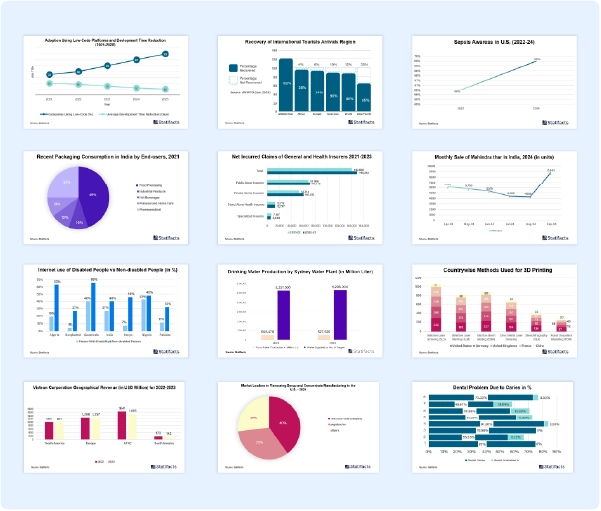The U.S. RFID in healthcare market size was evaluated at USD 2,080 million in 2024 and is expected to grow around USD 10,080 million by 2034, registering a CAGR of 17.1% from 2025 to 2034.
U.S. RFID in Healthcare Market Report Highlights
- By product, the tags segment dominated the U.S. RFID in healthcare market in 2024 with the highest revenue share and is anticipated to grow at the fastest CAGR during the forecast period.
- By product, the systems & software segment is anticipated to grow significantly over the forecast period.
- By application, the asset tracking segment held the largest revenue share in 2024 for the U.S. RFID in healthcare market.
- By application, the pharmaceutical tracking application segment is anticipated to grow fastest during the forecast period.
The U.S. RFID in healthcare market refers to the production, distribution, and application of RFID in healthcare, which helps track equipment and supplies, manage patients and personnel, and reduce medication-related errors, while investment in the technology continues to grow throughout the forecast period. RFID stands for Radio Frequency Identification (RFID) technology, which uses radio waves to identify people or objects. RFID (840-960MHz) monitoring of medical equipment and drugs based on IoT technology. Product identification using the drug name, packaging, expiration date, quantity, and model.
Enhancement in data security: this scheme is intended only for the management of drug purchases. With the RFID tracking system, healthcare specialists can view the nearest medical equipment or medication they need and access data on the location of patients and their visitors to enhance treatment quality. RFID is considered one of the most promising technologies in healthcare and has been recognized as a smart tool with the potential to overcome many difficulties that healthcare encounters, like inaccurate pharmaceutical tracking and the inability to track medical equipment.
The rising demand for sophisticated asset-tracking solutions in healthcare facilities, including blood monitoring systems, pharmaceutical tracking systems, patient tracking systems, and asset tracking systems, is driving the growth of the U.S. RFID in healthcare market. Healthcare asset tracking solutions improve inventory management and accuracy, ensure accurate asset usage and performance data, reduce procurement costs to replace lost or stolen equipment and allow staff to easily and quickly locate medical equipment.
The benefits of using asset tracking solutions in healthcare include improved auditing, automated data collection, prolonging the asset life cycle, advanced maintenance planning, improved inventory management, tracking deliveries and routes, reduced insurance premiums, and preventing assets from being lost, stolen, or misplaced. Deploying a real-time asset management system in the healthcare industry will significantly reduce the chances of equipment or asset losses. This management team will always be able to track the equipment within the space, reducing any occurrences of asset misplacement.
The need for better inventory management is driving the growth of the U.S. RFID in healthcare market. Better inventory management improves customer service, improves business planning, saves time, reduces costs, and improves accuracy. Optimal inventory management can increase market competitiveness, improve brand reputation, enhance productivity, and lower customer costs while generating customer loyalty through consistent availability of products.
The primary purpose of inventory management is to ensure that there are enough goods or materials to meet demand without creating overstock or excess inventory. Better inventory management benefits for healthcare also include tracking use and performance, streamlined supply chain management, patient identification, minimizing waste, minimizing shortages, inventory optimization, improved communication, data security, automated reordering, supply chain management, reduced inaccuracies, higher productivity, improving demand forecasting, auditing capabilities, expiry date alerts, improved visibility, real-time tracking, improved accuracy, compliance, cost saving, and patient safety.
Technological advancement in RFID technologies is driving the growth of the U.S. RFID in healthcare market. RFID technology is expected to see further integration with advanced analytics and automation. Trends include intelligent systems and improved data processing capabilities. As RFID technology advances, it provides greater accuracy and efficiency in asset management and tracking. It also helps to improve data accuracy and availability. Data collected and uploaded electronically, RFID also avoids duplication of data, transcription errors, and missed items when used to collect data on large numbers of items simultaneously.
RFID technology benefits inventory control, like environmental impact, cost savings, enhanced customer experience, source tagging, theft and loss prevention, reduction of human errors, and accuracy and speed in inventory management. AI algorithms can be used to analyze RFID data to uncover patterns, trends, behaviors, anomalies, and more, turning it into annotated data that can uncover meaningful insights and data-driven decisions.

